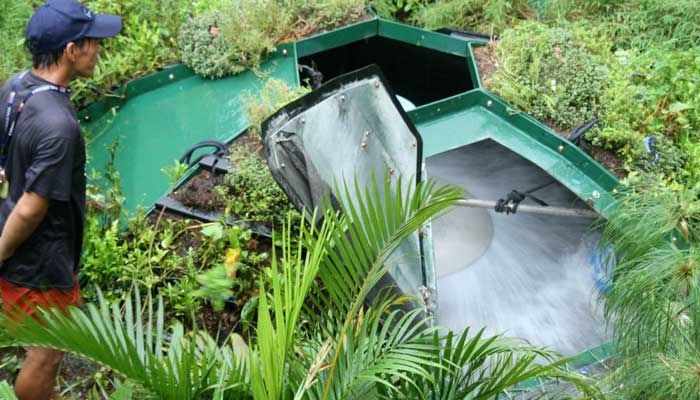Algae prevention methods, when enacted properly, serve to help pond owners avoid sick fish, dying plants, and green water. In addition, natural algae prevention can be accomplished without the use of harsh chemicals that have the potential to be harmful to fish and plants.
Why is Algae Harmful to Pond Ecosystems?
Algae has long been abhorred by gardeners for its ability to turn a clean water garden into a sludgy, murky mess. Aesthetic concerns, however, are minimal compared to the ways in which algae threatens the health of a fish pond and its inhabitants.
Algae feeds on the nutrients present in pond water that would otherwise be consumed by other forms of aquatic life. Because algae grows so rapidly, it can essentially starve plants by absorbing the necessary nutrients they need to live.
Not only does algae consume plant nutrients, it also consumes oxygen. Dr. Dave Goshorn, director of the DNR Resource Assessment Service in Maryland, points out that algae blooms consume the largest amount of oxygen during the night. In addition, he points out that killing the algae simply isn’t enough. If a large bloom dies, the very act of its decomposition will further reduce the pond’s oxygen levels.
Natural Algae Prevention Methods
Reduced sunlight – Algae thrives in direct sunlight. Reducing the amount of sunlight available to the pond will inhibit algae growth.
Beneficial bacteria – Granulated beneficial pond bacteria are all-natural, deadly to algae, and can be bought at most any pond supply store.
Barley straw – Although tests on how barley straw works have been inconclusive, it is theorized that the straw gives off an enzyme as it decays that makes pond water inhospitable to algae. Barley straw must be placed in running water to be effective.
Limiting fish – Many pond owners overstock their ponds without ever realizing it. Algae feed on fish waste products. The less fish waste that exists for the algae, the better (not to mention it’s a much healthier environment for the fish).
Keep the pond clean – Debris that collects on the surface of the water will eventually fall down to the bottom of the pond and decay into sludge. Not only does decaying plant matter release harmful ammonia into the water, but it provides a perfect breeding ground for algae. Keeping the pond clean prevents sludge build up.
Prevention Helps Pond Owners Avoid Toxic Algae Blooms
While most forms of common pond algae can eventually become a threat to fish and plants within the pond, some forms of algae are a threat to non-aquatic life as well.
Toxic algae, also known as blue-green algae, can pose serious heath risks for any animal that drinks the water and unknowingly ingests the blue-green algae. The Minnesota Pollution Control Agency reports that blue-green algae blooms are made up of cyanobacteria. These bacteria can cause respiratory problems in humans, and can result in death for house pets or farm animals that use a backyard pond as a drinking hole.
Preventing algae growth in ponds benefits not only life within the pond, but life outside of it as well. Every homeowner who is considering cultivating a garden pond would be wise to take algae prevention methods into consideration prior to constructing his or her water garden.









